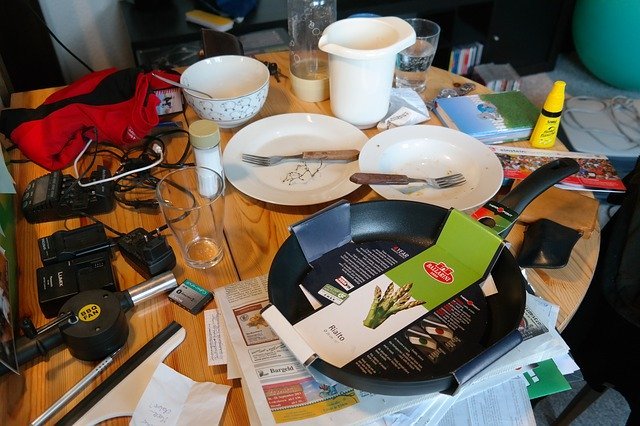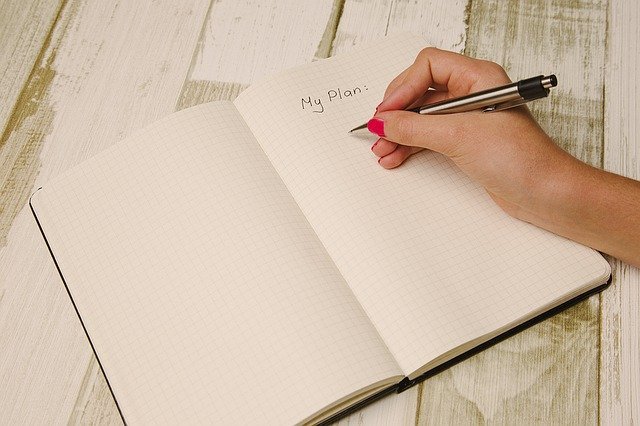
Clutter is energy draining. Simplicity is what we should aim for. Look around you. If you cannot see at least 50% of the surfaces in your dwelling that means you have too many unnecessary items on your shelves, furniture and on the floor. Here are a few tips on decluttering which will help you stay on top of the mess:
The 3-basket rule
One of the most efficient decluttering tactics you can try is the 3-basket rule. It’s simple – you just need to get three baskets or boxes, label them “Keep”, “Donate” and “Throw away”, and place them in the room you want to declutter. Then go through all the items and separate them into these three categories. Just ask yourself the simple question “Do I use and need this?”. Try to avoid any sentimental feelings; we often live in clutter because we refuse to get rid of useless items, just because they carry memories with them. However, keeping these items is not healthy or practical in the long run, because they gather a lot of dust make cleaning harder and can cause allergies and asthma.

Things we should throw away
Here’s a list of things we generally keep in our houses, but should throw away, because
they just keep space and are basically litter:
· Empty boxes, shoeboxes, appliances and mobile phone boxes. You get the idea.
· Old user manuals. You have the whole internet, hundreds of forums with people ready to help
you if any problem occurs.
· Expired make up. You know why.
· Old magazines, newspapers, promotional flyers, brochures, event invitations, sticky
notes and tags.
· Ugly underwear, socks with holes, clothes that are too big or too small.
· Old shoes, flip-flops and sneakers.
· Old technology - floppy disks, VHS tapes, players, etc.
· Expired drugs.
· Bills and paychecks older than 2 years.
· Trinkets that collect nothing but dust.
· Old jewellery.
· Games and puzzles with many missing pieces.
Bathroom clutter
When youdeclutter your bathroom, cleaning professionals advise to start with the medicine cabinet. Take everything out, get rid of the outdated makeup, skincare products and medications. Wipe the dust inside the cabinets and place everything back, by keeping the things you use most at eye level.
Next, organise any storage cabinets and drawers – remove everything, evaluate what you’ll use, throw everything else away. Use the same routine for the items under your shower and any other hidden storage area you may have behind the toilet or below the sink.
Finally, if you need any extra storage in your bathroom, you can always use baskets and small boxes, as long as they’re moisture proof. Also, remember to ventilate your bathroom regularly, to avoid mould and mildew.

Kitchen clutter
Keeping the kitchen clutter free is a tricky task, because many processes happen here – cooking, washing, eating, etc. You can choose to declutter your kitchen by focusing on item categories (glassware, bakeware, utensils), or you can go through the kitchen zone by zone. First, empty each space, assess each item and place it into one of the three boxes. Start with the big storage spaces first, like the upper cabinets and the pantry. Then move to the drawers, lower cabinets and the space under the sink. Finally, concentrate on the countertops, try to move some of the items into the storage spaces, keep only the things you use all the time
on the countertops.
Clear your closet
The easiest way to declutter a closet is by clothing type – start with the shoes, then go to pants, blouses, sweaters, jackets, and so on. It’s easier to decide which pants to throw away when you look at all your pants at once. So, go through all your clothes by type, and decide what you want to keep, throw away or donate. Once you’re done with that, you should fold or hang all the things you want to keep and store them by category. Put any dirty laundry you have into a specially designated basket or bring it to the laundry room. If any piece of clothing needs repairs, you should take care of them timely.

Bedroom organising
First, make your bed. It’s hard to feel the decluttering efforts when the biggest piece of furniture is messy. Then go to the nightstands, remove anything that doesn’t belong on them, like finished books, pens and paper, mail, wraps and boxes, and other. Then do the same with the tops of your dressers, bureaus and chests. Once you’re done with all the obvious spaces, you should move to the drawers and shelves. Toss or recycle everything you haven’t used for the last 6 months. And remember, decluttering and organizing shouldn’t be a one-time event; it should be a habit we develop every day.